
Latest Software Development Trends 2024
The software development market is constantly changing as new technology trends come and go.
There’s no such thing as future-proof software architecture or solution. Things that might seem cutting-edge today can become obsolete and unsupported in a few years.
It is thus really important to always keep an eye on the latest developments in the IT market, to prepare ourselves for what the future brings.
So what’s new for the software development industry and the IT market as a whole in 2023?
Let’s take a deep dive into the trends that will have the most impact on developers and IT executives over the coming year.
Contents
- 9 Software development trends to look out for in 2023
- 1. Rapidly rising popularity of low-code development
- 2. Microservices and their alternatives simplifies deployment and scaling
- 3. Increased focus on UX/UI
- 4. Big changes in the IT market
- 5. Cloud is on the rise
- 6. AI and ML sets brand new boundaries
- 7. Virtual Reality has got a chance to redeem itself
- 8. Security concerns on the rise
- 9. Use Of Blockchain in software development expands
9 Software development trends to look out for in 2024
The changes in software development resemble evolution rather than revolution.
We can thus confidently say that IT market in 2024 will continue in the direction it had in 2023.
However, different subbranches of software development will likely surprise us with new advancements. Artificial Intelligence, low code and custom software development companies have already announced many promising releases for the year.
1. Rising popularity of low-code development
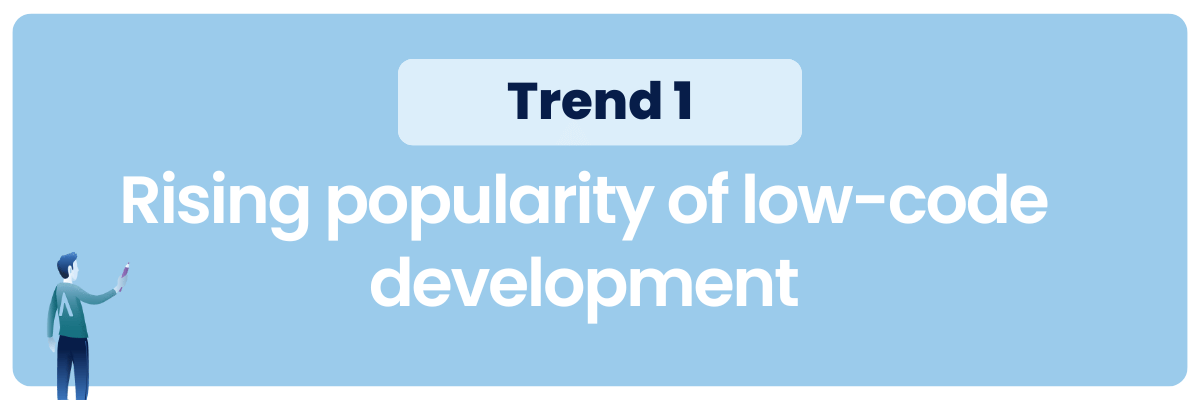
In 2024, we are at the stage where we can confidently say that custom software development is nearing complete maturity in many categories.
We have a multitude of different database systems created with specific business scenarios in mind, and they all are great. We have a wide variety of programming languages best suited to different kinds of applications, and they all are great.
What does it mean?
These days, changes in programming will boil down mostly to the optimization of existing solutions and architectures to push the boundary of software performance even further. Nevertheless, there are still some interesting advancements worth keeping an eye on.
One of the main Low-code development platforms, as industry experts project that their popularity will only continue to rise and may very be the most influential trend in software development.
According to the latest Gartner forecasts, the global low-code market is expected to reach $26.9 billion in 2024. This estimate represents an increase of nearly 20%, up 19.6% from 2022 to be exact. In other words, it vastly outpaces the overall growth of the traditional software development market.
Rapid software development platforms: best of both worlds
Some software developers fear that low-code and no-code platforms may be on their way to take their jobs away. Others argue that these tools are only good for simple proof-of-concept (POC) projects.
These assumptions might have been true a couple of years ago, but times have changed, and new developments are on the horizon.
Low-code open-source platforms based on well-known programming languages like Java offer a great deal of modularity, while at the same time allowing developers to create more advanced business logic. The open nature of these solutions also eliminates the risk of vendor lock-in, thanks to allowing individual companies to retain complete data ownership.
Let’s consider an example of Openkoda software development platform
Openkoda is an AI-powered, open-source low-code platform designed to accelerate application development for enterprise and SaaS solutions.
It combines the ease of out-of-the-box functionalities with the flexibility of full customizability, making it a compelling option for developers looking to streamline their workflow without being constrained by vendor lock-ins.

By offering pre-built templates and customizable solutions, enabling developers to create applications up to 60% faster than traditional methods.
Its open-source nature ensures developers retain full ownership of their code, allowing for greater portability and adaptability across various deployment environments, such as on-premises, cloud, or hybrid setups.
Despite being a low-code platform, Openkoda offers extensive customizability using familiar programming languages like Java and JavaScript, which distinguishes it from many other low-code solutions that limit customization
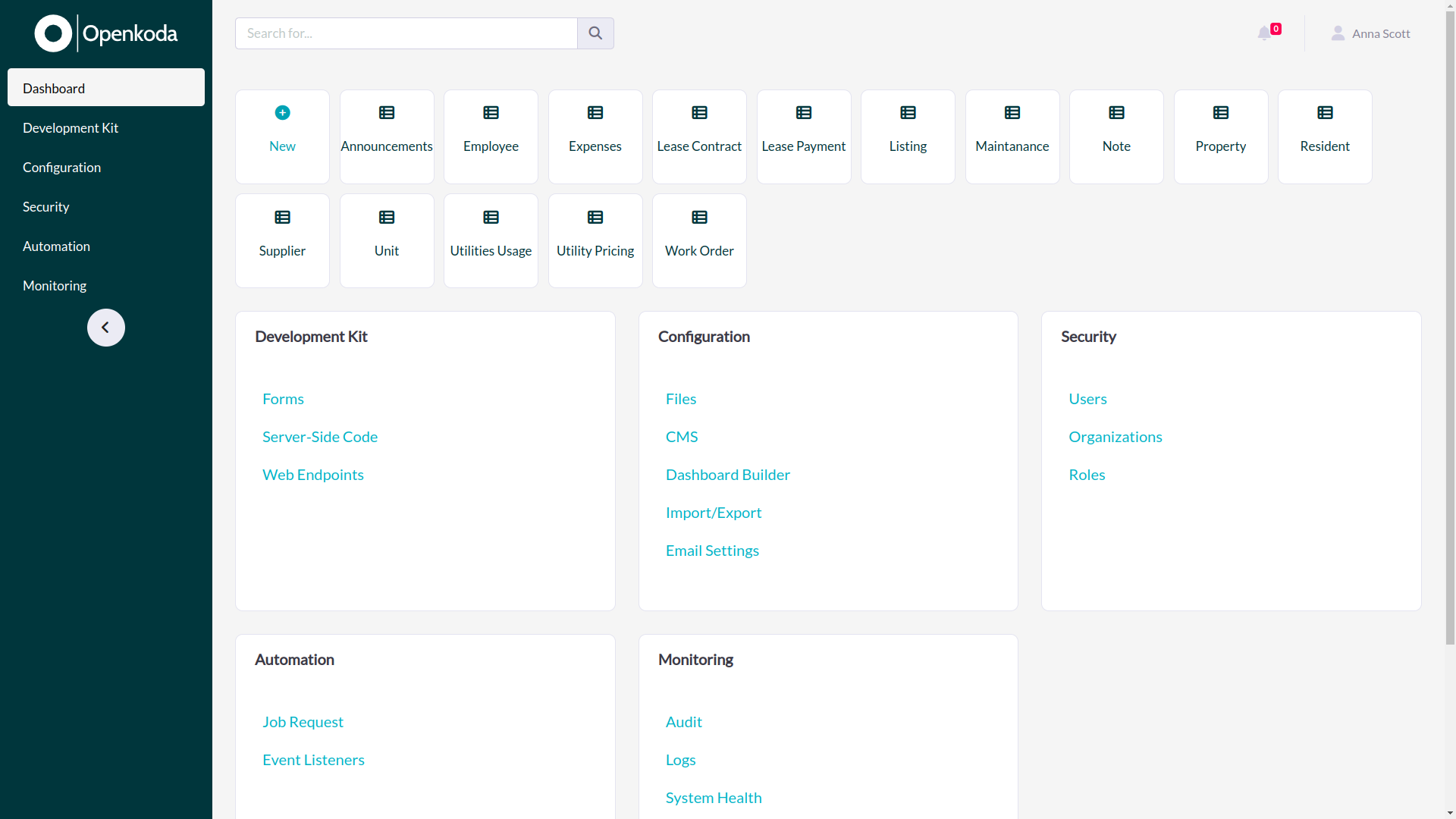
And what about your average software developer?
Well, low-code platforms greatly simplify repetitive tasks that experienced programmers have done hundreds of times in their careers and allow them to focus only on the fun part of coding itself.
Openkoda is a ready-made tool available today! Do you want to see its capabilities in action?
Schedule your own free demo today!
2. Microservices and their alternatives simplifies deployment and scaling

Microservices are an ongoing architectural trend in the software industry that you’ve all probably heard about at this point. This approach focuses on creating single-function modules with well-defined operations and interfaces.
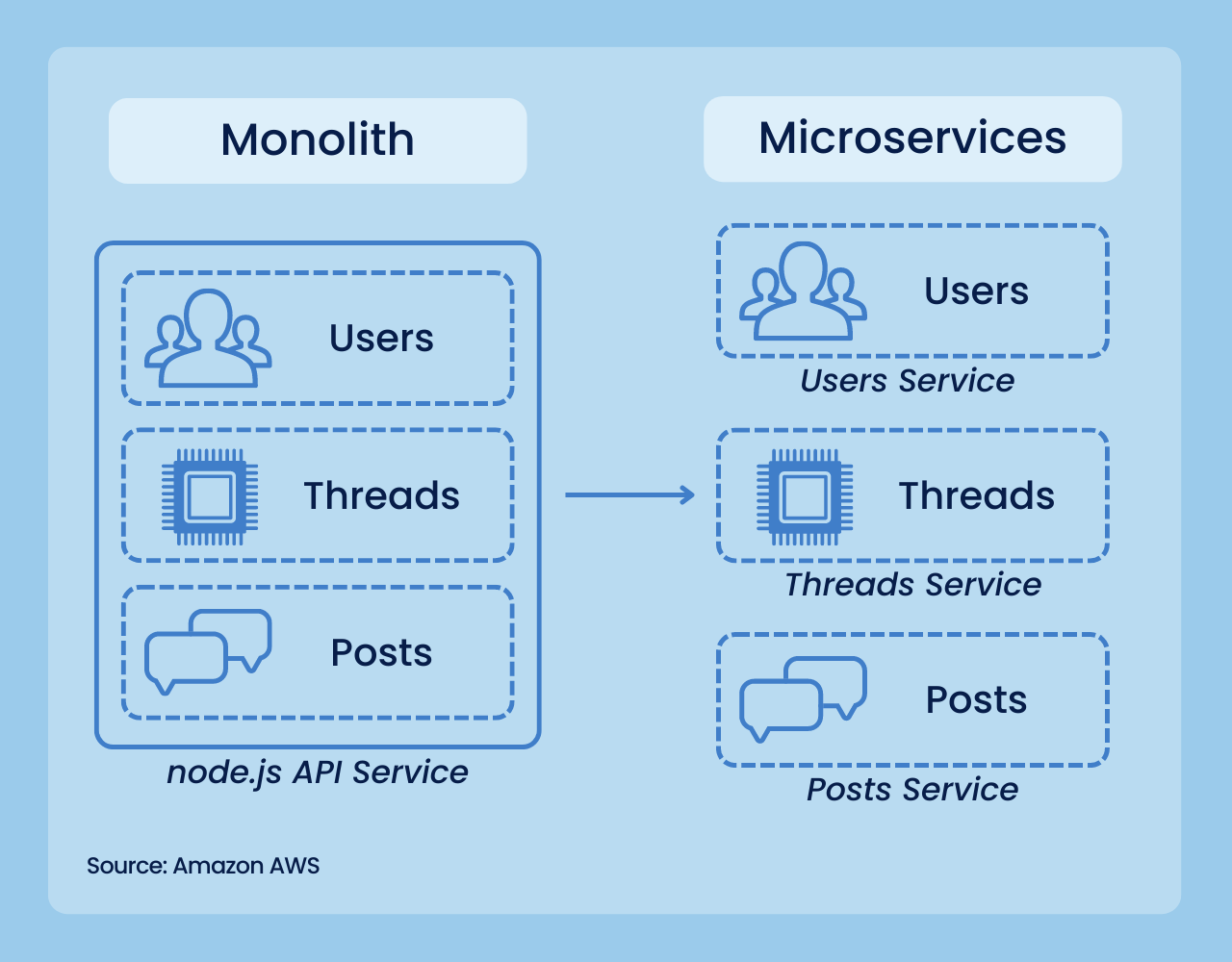
Source
Recently, new cloud and container developments have greatly increased the software development companies’ interest in microservices as a go-to choice when building software architecture from scratch. The consensus among developers is that monolith architectures just lack the sheer scalability capabilities of microservices.
Considering how important scalability is to businesses, it is hardly surprising why this architecture has gained traction recently.
In a 2021 IBM survey, 88% of current microservices users said they agree that microservices architecture offers many benefits to their development teams and 87% agree or completely agree that the effort and expense of adopting this approach will be worth it.
We can easily predict that due to new enchantments the popularity of microservices, will continue to grow in 2024, but are there any alternatives on the horizon? There might be.
Monolith Software architectures might make a comeback in a form of Spring Modulith project.
It’s a modular monolith that lets software developers write code using dynamic isolated pieces. With this approach, programmers can separate testing, development, documentation, and dependencies. It basically offers monolith architecture modularity and efficiency of microservice development with little overhead involved. The Spring Modulith project isn’t based on Java platform modularization (Jigsaw). The separation is enforced during testing and in runtime, this is a normal Spring Boot project.
Will Modulith be a serious alternative to ever more popular Microservices? Only time will tell.
3. Focus on UX with the help of AI
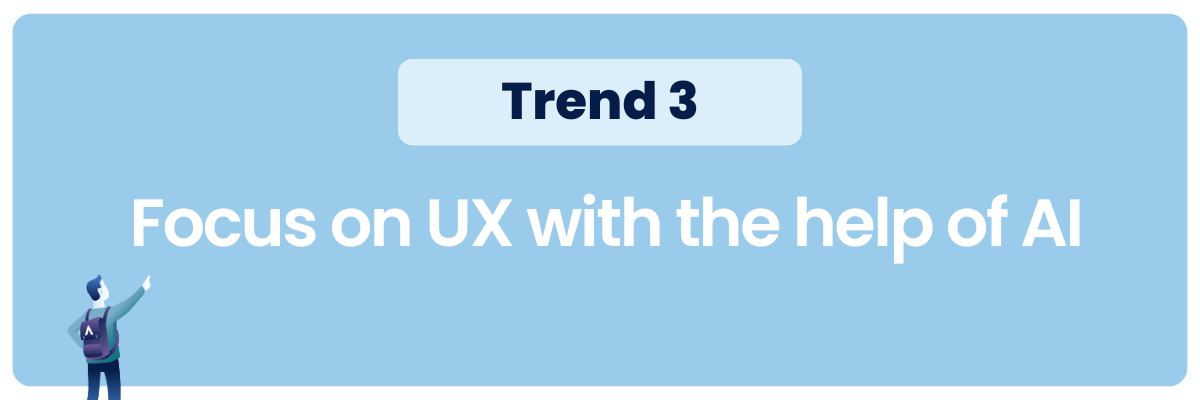
These days, it’s an absolute necessity for businesses to have an online presence.
But through the years user exceptions have changed, and simple static websites just won’t cut it.
Continued interest in progressive web apps
To answer these needs, many companies are turning to progressive web apps (PWAs) to find a solution to rapid mobile development.
The interest in progressive web applications has been steadily growing since their introduction in 2015. In one study, progressive web apps recorded a 36% higher conversion rate than their native counterpart.
Being regular websites by nature, these software solutions, they don’t require their users to download anything. At the same time, they fulfill a great chunk of mobile application functionalities. Progressive web apps can thus be a great tool for businesses to improve engagement rates and user experience.
Generative AI in front end development
In 2024 many whinks that traditional web development is soon be a thing of the past all thanks to the emergence of generative artificial intelligence.
Generative AI is a major trend reshaping web development, particularly front-end development, by automating and enhancing the creation of user interfaces and experiences.
This technology leverages machine learning to generate code, design elements, and even complete layouts based on simple inputs or existing data. For instance, tools like OpenAI’s Codex can translate natural language descriptions into HTML and CSS, streamlining the development process.
While generative AI is beneficial across all aspects of software development, its impact on front-end development is especially profound.
It enables developers to quickly prototype, test, and iterate on designs, reducing the time and effort required to build visually appealing and user-friendly websites.
According to recent findings, 85% of IT leaders consider generative AI critical to their operations in the coming years, driven by the promise of increased efficiency and the ability to generate novel insights
4. Big changes in the IT market
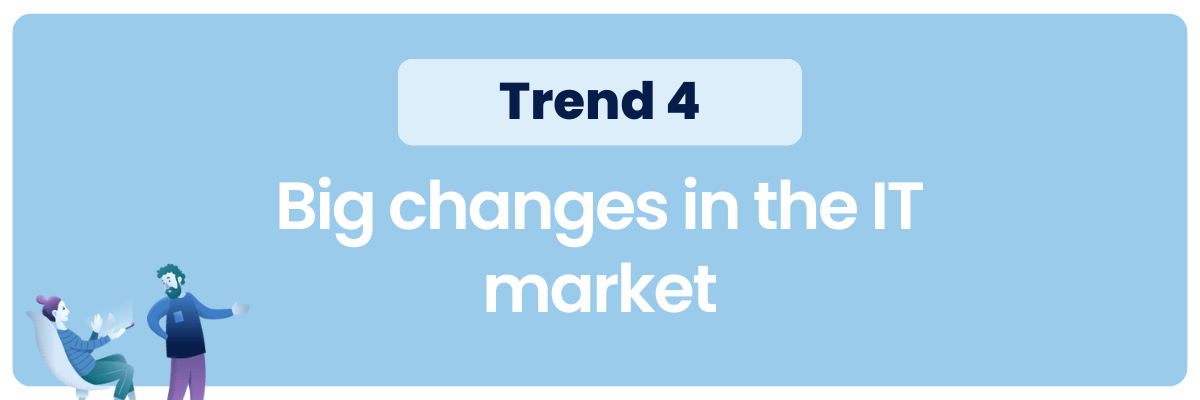
Big tech layoffs
In the past years, developers still seem to land jobs with ease.
But lately, there was not a single month when there wasn’t another big tech layoff announced. The general economic slowdown that has taken place over the past year, combined with large layoffs at major tech companies, has resulted in a somewhat less rosy job market outlook for developers.
It is estimated that over 200 thousand workers has been laid off from major tech companies like Meta, Twitter, and Amazon last year.
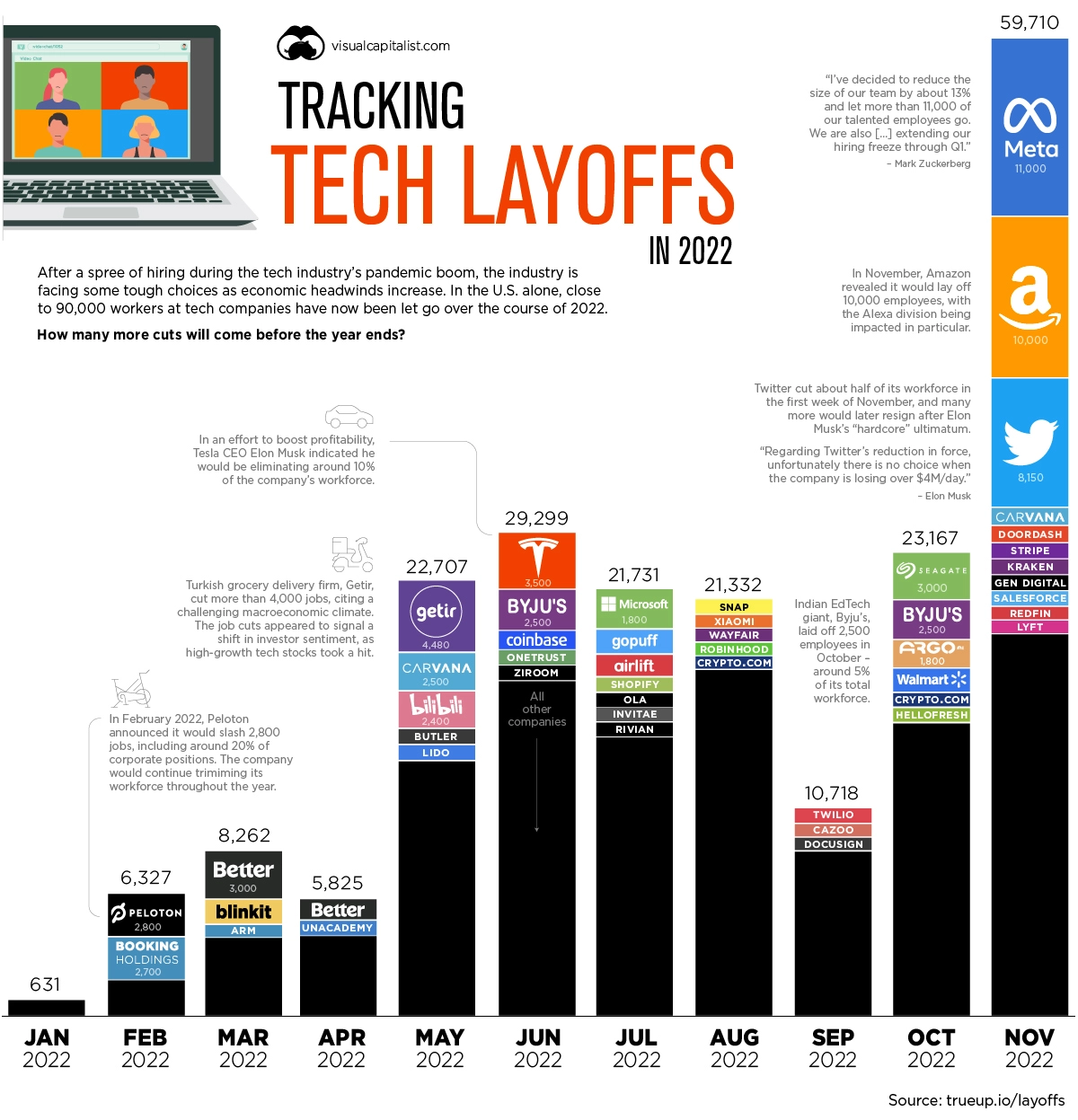
Source
Will this worrying trend continue in 2024?
Well, things might not look as bleak as they seem.
The economy is beginning to slowly stabilize. Increased interest rates have greatly reduced companies’ access to cheap and easy external funding sources, but also have put inflation somewhat under control.
But regardless of that, good developers will still be able to find good positions, but they may not be as abundant as in previous years. Most disadvantaged will be those who are just beginning their programming adventure.
[Read also: How to Find Software Developers? 10 Experts Tips]
Software development outsourcing remains in demand
The need for rapid digital transformation is now firmly understood by all top executives.
But how to introduce new digital solutions when the software development process is so resource-consuming and experienced developers are hard to come by?
The answer is outsourcing.
According to a recent Gartner report, 64% of executives say that it is increasingly hard to find experienced IT professionals which impact their digitalization efforts. Another research from last year has shown that up to 73% of technology leaders say it’s either very or somewhat challenging to find new talents in the IT market.
Outsourcing has proven to be a great way of extending IT departments or even developing new digitalized corporate solutions without the need for in-house development teams in the first place.
In 2021 the IT outsourcing market reached over 520 billion USD and is expected to swell to over $689 billion by 2027. What’s more, According to experts, global IT spending was increasing by 4% in recent years. 2024 promises to be equally optimistic.
What does it mean for developers, though?
Software houses and software development companies will still be reputable employers.
If you want to work on various development projects using cutting-edge technology, companies like Stratoflow are a great choice for you!
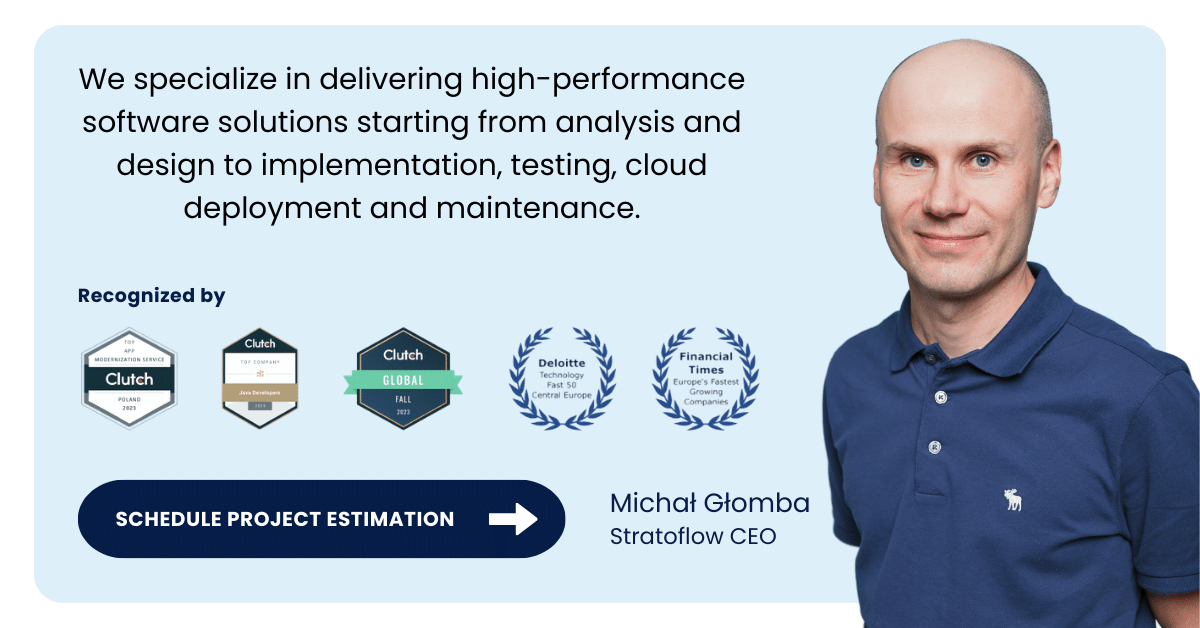
5. Cloud is still on the rise

In recent years, cloud architectures were embraced not only by startups and commercial businesses, but even by the public sector organizations and institutions.
Healthcare organizations, legal authorities, security offices, and even the Pentagon have recognized the value of cloud computing.
The trend is fueled by the fact that companies are now more confident in using cloud-native solutions for app development, team management, and communication.
These are also a much larger choice of software products as organizations can choose between services hosted in public, private, or hybrid clouds.
Based on containers and microservices, cloud-native software solutions provide a great deal of flexibility and scalability and improve the productivity of software development teams.
It’s entirely possible that by the end of 2024, there will be a significant transition of various businesses and other organizations to the cloud across the whole world and not only in highly developed economies.
It should be noted though that the demand for cloud services and tools in the past three years has grown mostly due to the necessity of facilitating remote work.
According to recent studies, more than 90% of companies representatives said that cloud computing usage is higher due to the pandemic. Even though global IT spending decreased during the lockdowns, cloud spending has actually grown by more than 6% to a total revenue of $258 billion. The cloud computing market is expected to double over the next couple of years.
Edge computing
Edge computing is revolutionizing the software development landscape by shifting data processing closer to the source of data generation—right at the network’s edge.
Unlike traditional cloud computing, which centralizes processing in remote data centers, edge computing allows devices like sensors, smartphones, and IoT gadgets to perform computations locally. This decentralization significantly reduces latency, enhances real-time data processing, and alleviates bandwidth pressure.
For the software development market, this means a new frontier of opportunities: developers are now tasked with creating lightweight, efficient applications capable of functioning independently on edge devices.
This shift encourages innovation in fields such as autonomous vehicles, smart cities, and industrial automation, fostering a dynamic ecosystem where responsiveness and efficiency are paramount.
As a result, edge computing is not just a technological advancement but a catalyst for the next wave of intelligent, responsive software solutions.
[Read also: How to Build a Custom Accounting Software]
6. AI and ML sets brand new boundaries
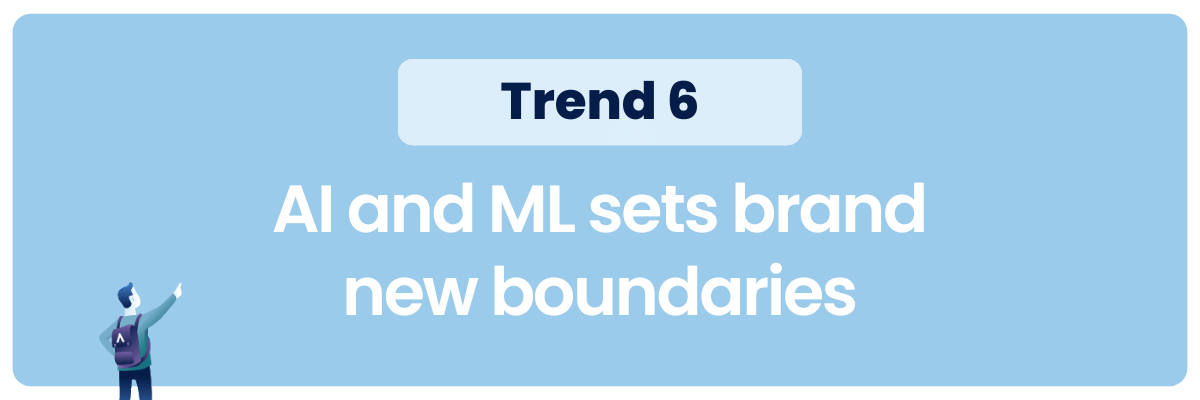
AI has been blowing up lately, both in the news and in real-life applications.
Just a couple of years ago, we’ve only been wondering how AI will influence industries like healthcare and ecommerce with stuff like advanced pattern recognition and machine learning.
Now, in 2024 the age of AI has finally come.
Artificial intelligence is creating art and holding conversations with humans from all over the globe.
For developers, incorporating AI in their solutions will soon become a must-have rather than some breakthrough functionality.
Big players in the IT market have already noticed that trend.
Google as well as other search engines are also currently in a race to successfully integrate chatbot functionalities into their search engines.
After the immense success of ChatGPT, other companies soon followed in OpenAI’s footsteps to create their own natural language solutions.

Another of the most influential trends that have revolutionized the way we perceive AI solutions have been Stable Diffusion.
It is a deep learning, text-to-image model released last year that is primarily used to generate images based on natural language descriptions. It can also be applied to other tasks such as inpainting, outpainting, and generating image-to-image translations guided by a text prompt.
In the past months, apps like Dalle and Sora have been shocking us with out-of-this-world art pieces generated based seemingly only on a basic description written by the user.
But as you might suspect, there’s another side to this coin.
Just as new AI-based applications are popping up, there are serious copyright concerns. After all, Stable Diffusion algorithms don’t “create” the content they present to the user, but fetch for different elements online and sort of mash them up together to obtain desired results.
Generative pre-trained transformer algorithms, that ChatGPT is based on, also have their own sets of problems. Sometimes the answer they give you can sound off or, in some circumstances, it can be just plainly incorrect.
You can also check it for yourself.
If you have a chance, type into ChatGPT a question from a topic that you are familiar with, like “What are the top 5 electric vehicles currently on the market?”, or “What programming language is best for writing high-performance software?”. More often than not, you will see that answers that are B- at best.
OpenAI acknowledged that and said that “sometimes ChatGPT writes plausible-sounding but incorrect or nonsensical answers”. This behavior is actually quite common to large AI-enabled language models and is often called artificial intelligence hallucination.
How will we solve copyright issues related to AI-generated content? How can we stop LLMs from spreading misinformation to their users? Will 2024 mark the year that humanity gains access to AGI?
These are the main questions regarding artificial intelligence that await answers in 2024.
One thing is for sure – AI is here, and it is only beginning to influence more and more aspects of our lives.
7. Virtual reality has got a chance to redeem itself
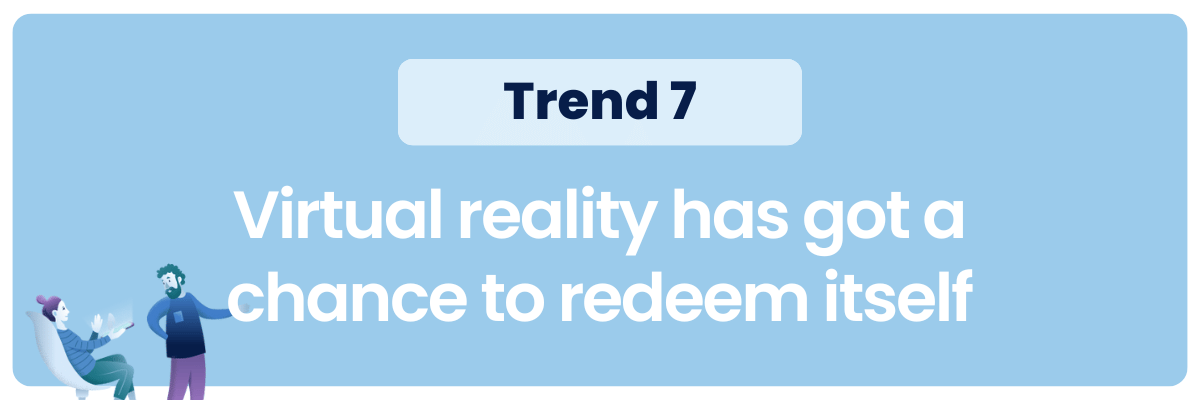
In 2021 VR has got a lot of attention due to the sudden rebranding of Facebook and its ambitious plans to launch Metaverse – a revolutionary VR alternative to traditional social media platforms.
Two years later, after pouring billions of dollars into its quite impressive VR headset and much less impressive virtual environment called Horizon Worlds, Metaverse, at least for now, has turned out to be a commercial flop of monumental proportions.
Even though industry leaders have hopped on the bandwagon and searched for people for positions of “Chief Metaverse Officer” the hype has quickly died down, and now this new virtual universe has fewer than 1000 daily active users.

Despite that, Mixed Reality (MR), Augmented Reality (AR), and Virtual Reality (VR) have all significant potential in many enterprise applications.
Organizations in sectors like defense, tourism, architecture, construction, gaming, and healthcare, see a lot of opportunities in this technology but is just not ready at this moment.
The threshold for wide commercial use of virtual reality is somewhere out there. We have yet to reach it.
Having said that, the global market for VR and MR is growing rapidly. An IndustryARC market research report projects that this market will grow from just over 1 billion USD in 2017 to almost 10 billion in 2024, and it will see a CAGR of 73.2% during the 2018-2023 period.
What does it mean for software developers?
In the coming months and years, there might be some interesting developments in the fields of gaming and programming languages related to it like C# and Java.
8. Security concerns on the rise

Another of the key software development trends is rising awareness about cybersecurity.
Industry experts point out that cybercrimes cause trillions of dollars in losses. it should come as no surprise that cybersecurity is becoming a prominent consideration when developing an enterprise-grade software application.
That’s why DevSecOps is the preferred approach of more and more companies. Development Security and operations, or DevSecOps for short, is an approach to culture, automation, and software design that integrates security as a shared responsibility throughout the entire development process.
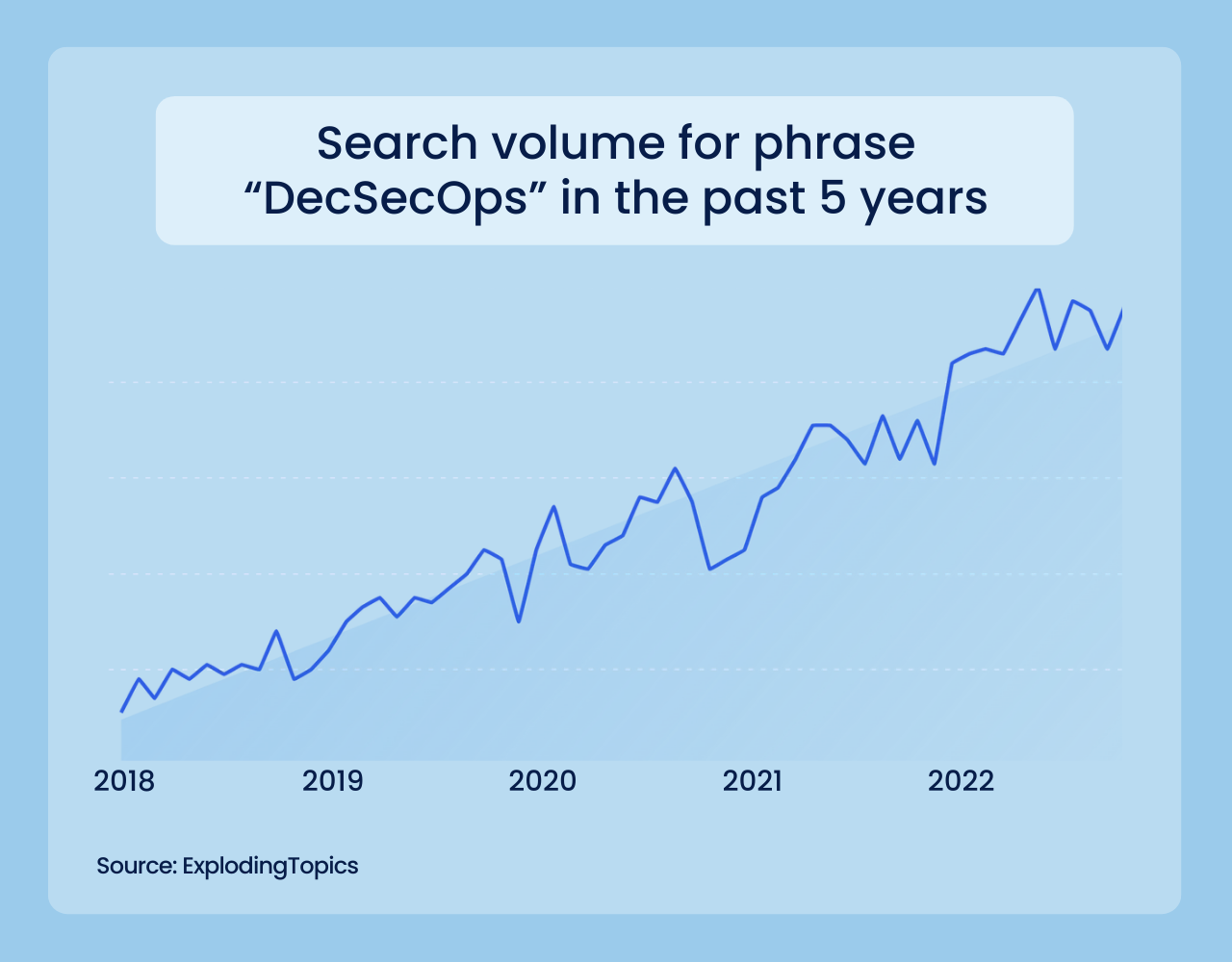
Source
Today, new features and code are being pushed out very quickly, so quickly that security testing cannot keep up. That’s why DevSecOps integration is so important when implementing security without having to slow down the pace of the development or delay future releases.
The main objective of DevSecOps teams is to fix security issues in the code in real-time instead of leaving them for being dealt with at the tail end of the development process. The result is software that’s deployed as quickly and securely as possible.
The DevSecOps approach has gained a lot of popularity recently. In a 2021 GitLab survey, 70% of IT security experts said their teams have moved security earlier in the software development process. That represents almost a 7% increase year-to-year. We can predict that this trend will only grow in 2024.
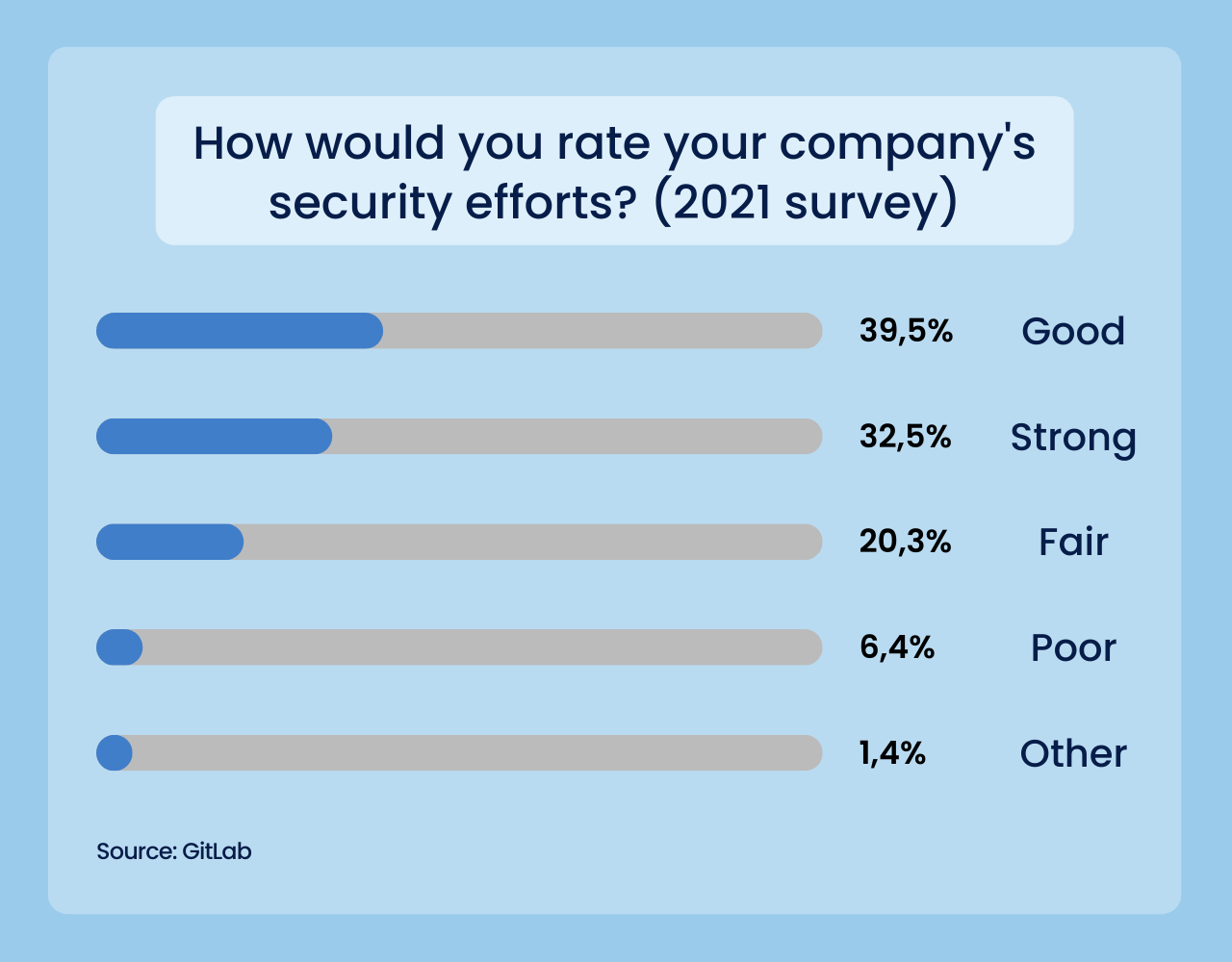
Source
9. Use Of Blockchain in software development expands
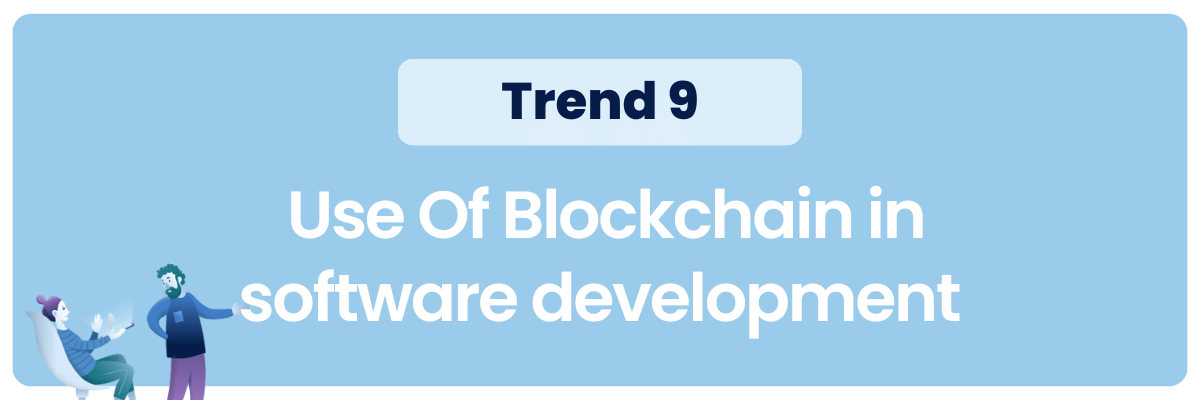
The media cover concerning blockchain technology lately has been focused on cryptocurrencies and NFTs.
But, this technology has pretty important implications for the broader software development industry as well.
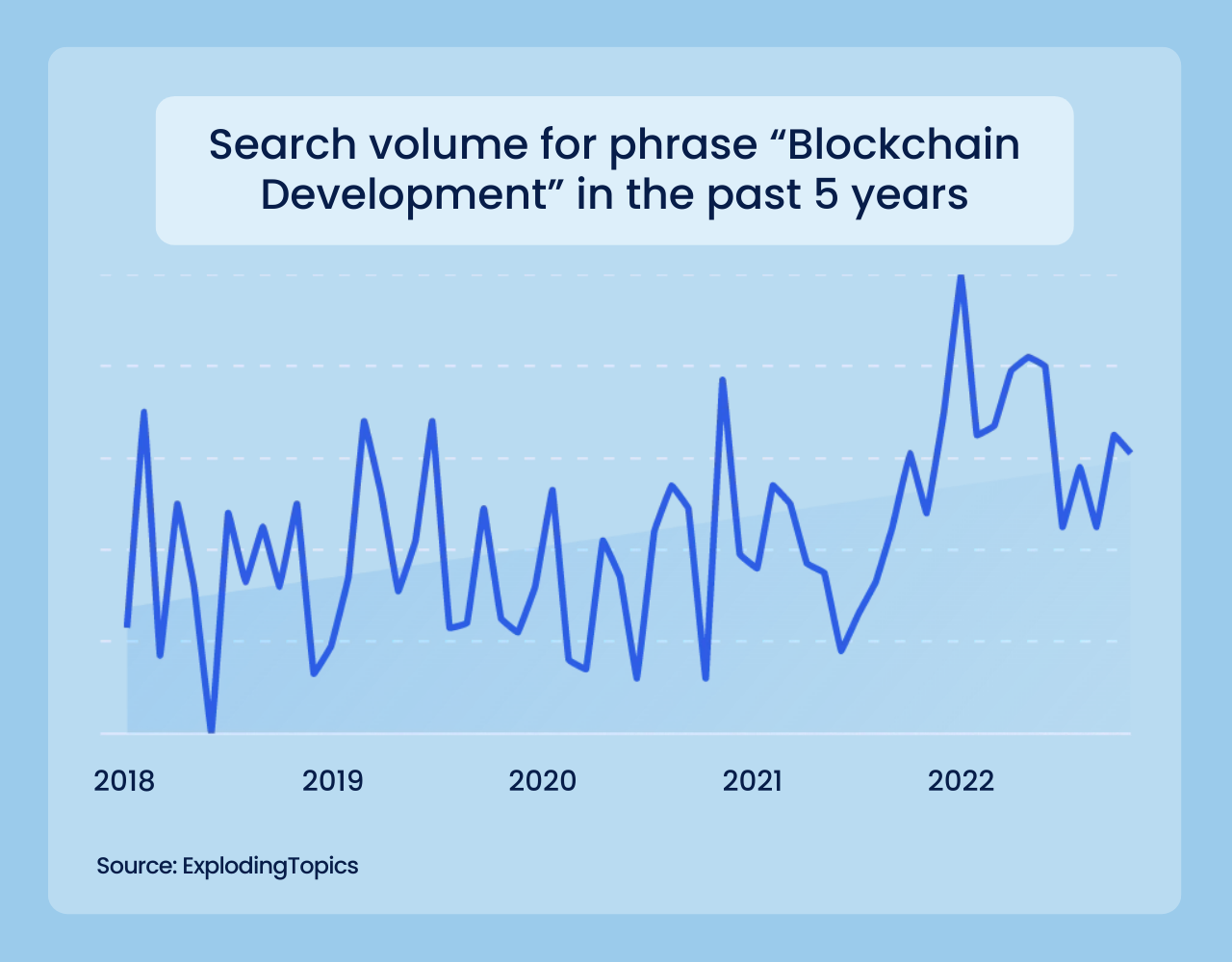
Source
Of the key advantage of blockchain technology is its security. Blockchain-oriented software (or BOS for short) systems are robust and incredibly secure.
The data in these systems is replicated and decentralized, almost completely eliminating the threat of unauthorized access.
One area in which the security of blockchain technology can find its practical use in the near future is the healthcare industry.
Blockchain-based systems can create links between pharmaceutical companies, hospitals, and other healthcare facilities, all while having very sensitive patient data secured.
Blockchain can also find its use in the fintech industry. They can automate financial management systems using a technology called smart contracts. Once a given condition is met, the contract is executed immediately. Because these contracts are digital and fully automated, there’s no paperwork involved, saving a lot of time in the process.
Even though NFTs have turned out to be a huge flop and didn’t live up to the hype, the blockchain market is still going strong.
[Read also: In-Depth Guide to Accounting System: Definition, Types and Ideas for Custom Solutions]
Latest software development trends – closing thoughts
Software development is a constantly evolving field. While some programming languages and frameworks can be all the rage, a few years later the same technologies can be regarded as clunky and obsolete.
To remain competitive in this highly digitalized world, business executives and software developers should always keep up with the latest trends that are shaping the future of software engineering, and integrate new technologies into their processes.
Related Posts
Thank you for taking the time to read our blog post!